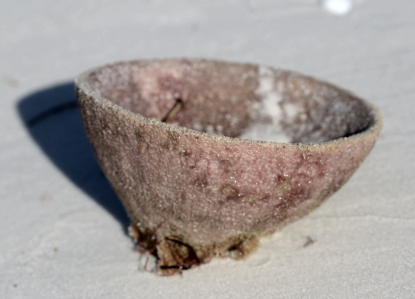
Ircinia campana
Vase Sponges, like many sponges, are obviously named after their shape. This sponge can grow up to two feet. The "Vase" in Vase Sponge comes from its shape, which is often bowl shaped or tube like as it grows older and taller.
Its harmless and inactive nature allows its insides double as shelter for other sea creatures, such as brittle stars and small fish. Sponges are composed of a colony of single-celled organisms that work together to perform a variety of bodily functions. Instead of a skeleton they're supported by a matrix of silica spicules (short tapered glass rods).
Sponges and airplanes have a lot in common. As the speed of the water currant increases, the pressure within the sponge decreases and pulls water through its covering of many tiny pores into an internal system of canals. Larger collar cells have hair-like whips that gently mix the water as it moves slowly through the sponge allowing it to feed efficiently. The collar is sticky and collects the oxygen, plankton, bacteria and other organic nutrients. Carbon dioxide and waste are then expelled.
In a single day a sea sponge can process 10,000 times its volume of water through its system. The large amount of water passing through a sponge makes them self-cleaning. Also sponges have antibacterial enzymes to kill bacteria. These attributes make the sponge ideal for washing and cleaning.
Live shells should never be taken from any Florida State Park.